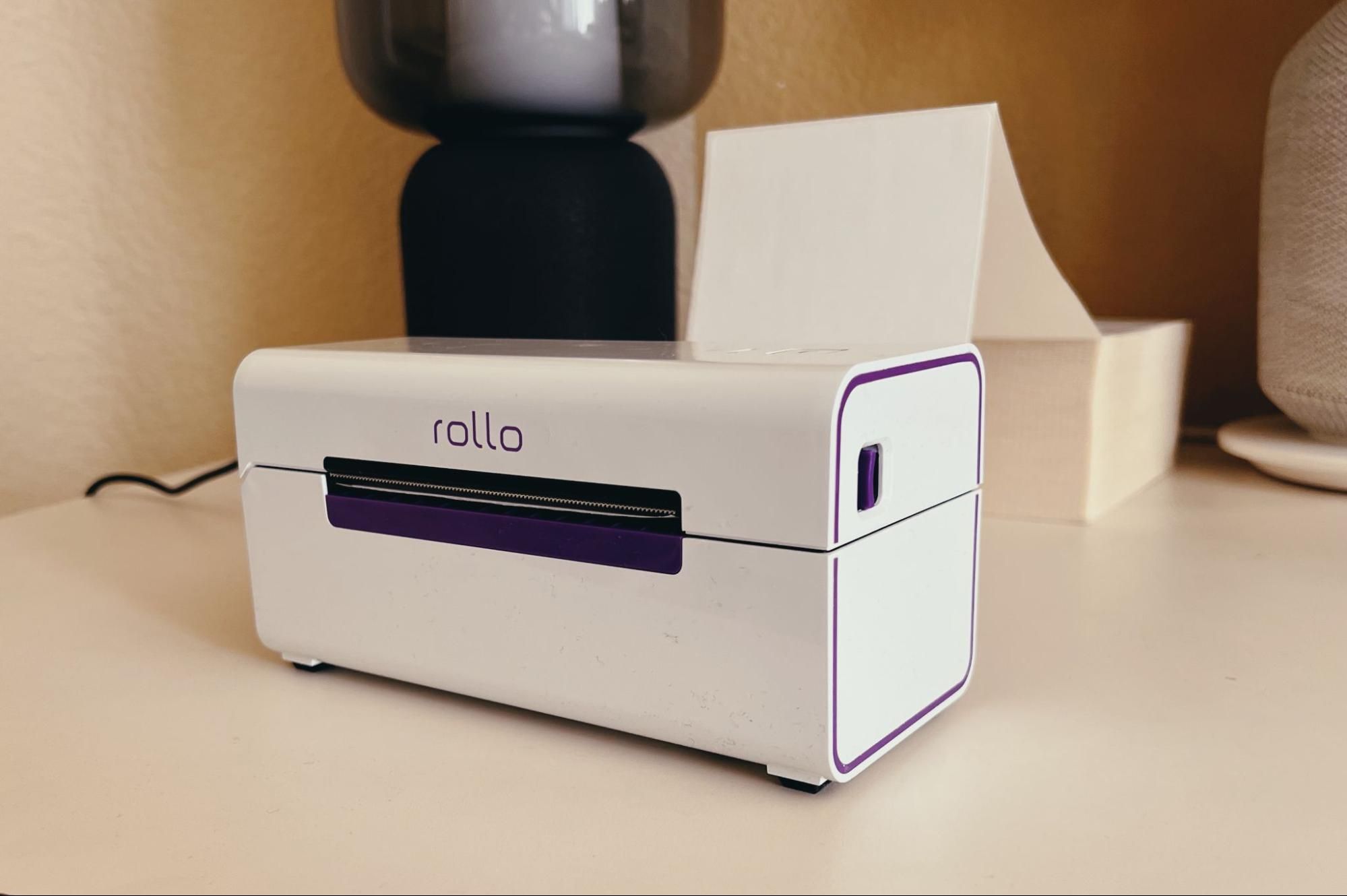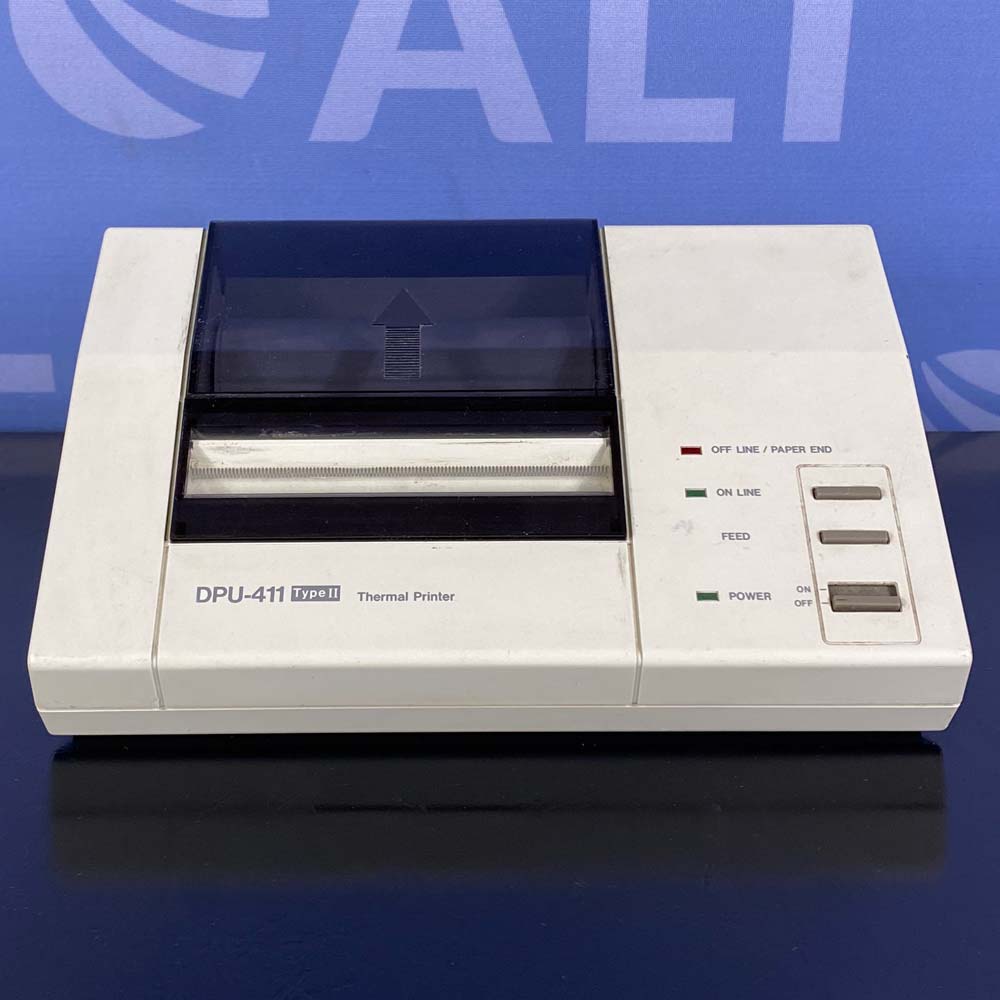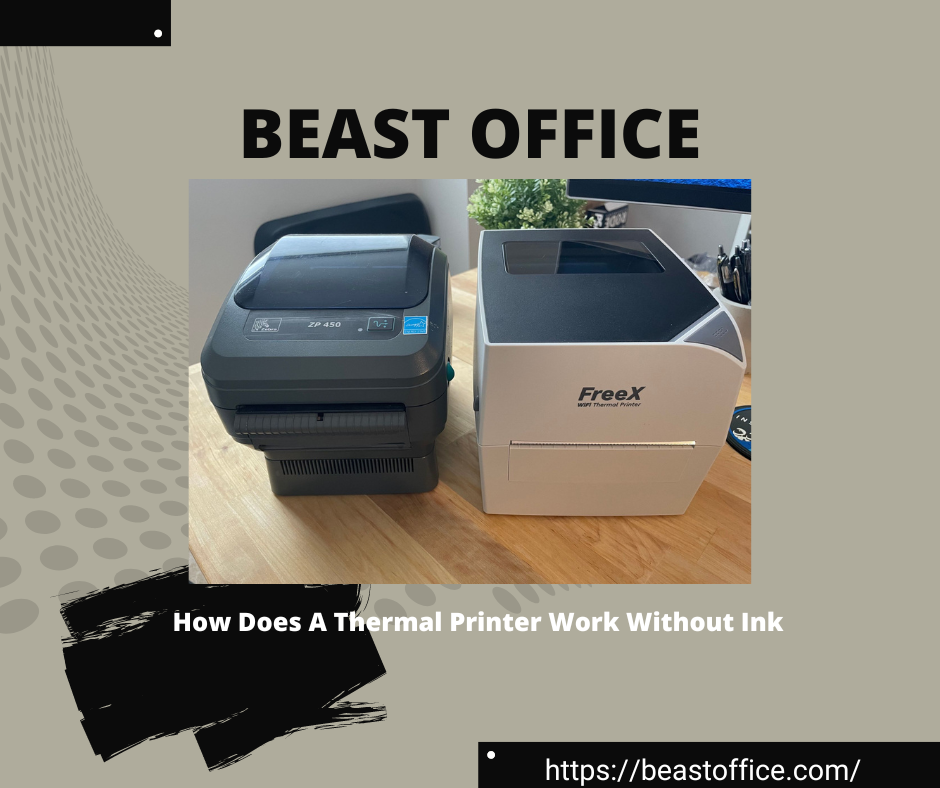In this article, we have described the detailed mechanism of thermal printer functioning.
What Is A Thermal Printer? What Are Its Applications
A thermal Printer is a type of printer that works on a heated printhead pressed at a surface to produce black text and images. It has different working methods that decide whether to use ink or not. So do thermal printers need ink? These printers do not apply anything to the paper; rather, the paper reveals the image or text.
In other typical printers, there is a needs to replace the ribbon or cartridge when the ink finishes. You do not need to replace anything in the thermal printer, but the only paper needs replacement which doesn’t cost much.

These thermal printers are common in retail stores, hospitals, labels, filling stations, and offices. Their use is exceeding for shipping labeling. Amazon is the main example of using this trend to label shipping products. Most sellers print their barcodes to label o products. Sometimes it gets difficult for the companies to track the asset due to a lack of resources which is now getting easier with thermal label printers.
How Does A Thermal Printer Work Without Ink - Printing Methods
Generally, a thermal printer works with the help of a thermal head, which heats up when the machine starts running. The temperature is already set at the heating element as per the requirement of the tape. Once a certain temperature is attained, no temperature change will occur during printing. In some thermal printers, heat-sensitive tape cutters are also present to separate the labels.

Method 1 - Direct Thermal Printing
Your thermal printer doesn’t need a ribbon, toner, or ink in direct thermal printing. But there is the main use of heat and pressure applied on paper. The thermal paper starts getting dark when the printhead is pressed, turning into an image or text.
It doesn’t cost much to maintain and use these printers, but there is a high chance of printed material getting light or fading away over time. The labels, tags, or images you print using these machines will fade or get darker in high light or heat.
Method 2 - Thermal Transfer Printing
On the other hand, the thermal transfer printing method relies on the heated printhead, which applies heat to the rubber or melting ink on the media. The ink absorbs the image with heat to become a part of the media. You will get a high-quality image with this technique.
A wide range of media is compatible with thermal transfer printing, such as paper, polypropylene, and polyester. This method is advantageous compared to direct printing because the print lasts longer without fading.
However, it requires more maintenance which can cost you to replace the multiple ribbons to print media.
What Are Some Other Common Thermal Printers
After choosing the printing method, you must choose a certain model that will meet all your needs. Here are some other types of thermal printers you can choose:
Mobile Thermal Printers
These printers are portable to help you print barcodes when you are on the move. They are lightweight, durable, and offer wireless connectivity.
These printers are more popular in retail, healthcare, hospitals, warehouse management, manufacturing, and transportation to print labels and tags.
Industrial Printer
You will need an industrial thermal printer to print a large volume of items for highly demanding areas. They are large in size and highly functional for 24/7 support and business operation. You can see the Internet of Things and other technologies for competitive benefit.
Desktop Printer
Specifically designed for desk use only, the desk printers are small, wired, or wireless to maintain a simple load. For printing tags and labels, you will find desktop printers more commonly in hospitality, healthcare, and light manufacturing.
What Are The Advantages & Disadvantages of Thermal Printers

Do you need help deciding if a thermal printer is worth an investment compared to other printers? Check out some of the benefits and downsides of using thermal printers.
Advantages
- Your ordinary printer may take a few seconds to print items, but a thermal printer works at lightning speed, which is extremely fast to help more customers within less time.
- As you do not need ribbon or ink for printing, these printers are cost-effective and highly efficient. They do not require frequent repairs or replacements, which is also beneficial for your pocket.
- There is no hard and fast rule to control or operate these printers because only a few buttons can do all work with the software.
- The noise-free operation may them environment friendly.
Disadvantages
The major disadvantage of a thermal printer is its high price tag. You will find these devices comparably more expensive than other printers. Though you can save money by not using ink, thermal paper is essential to buy.
- These printers require high heat to print material, which can cause the print head to get damaged after some time.
- There is also a color limitation in thermal printers because there is no better option for vibrant or pigmented prints. However, it isn’t a big deal if you have to print labels or tags for shipping only.
- The thermal printers' labels are heat sensitive, meaning they will fade away when exposed to intense heat or light.
Wrapping Up
A thermal printer is ideal if you want a printer to print barcodes such as tags, labels, or wristbands. How does a thermal printer work without ink?
The superior technology doesn’t require ribbon or ink and offers great media flexibility, requires minimum maintenance, delivers high-quality prints, and benefits with multiple applications. We hope this guideline will help you select the best thermal printer suited for your business.








